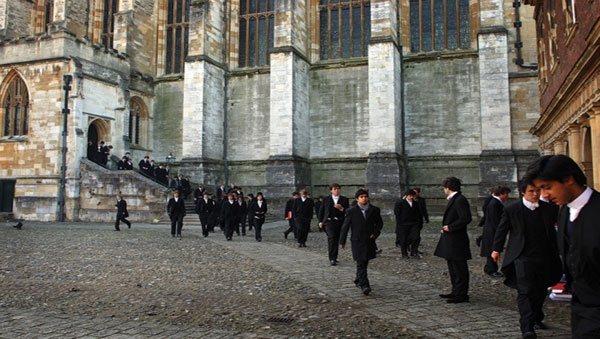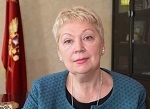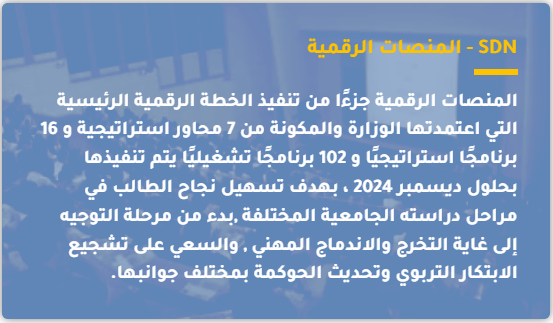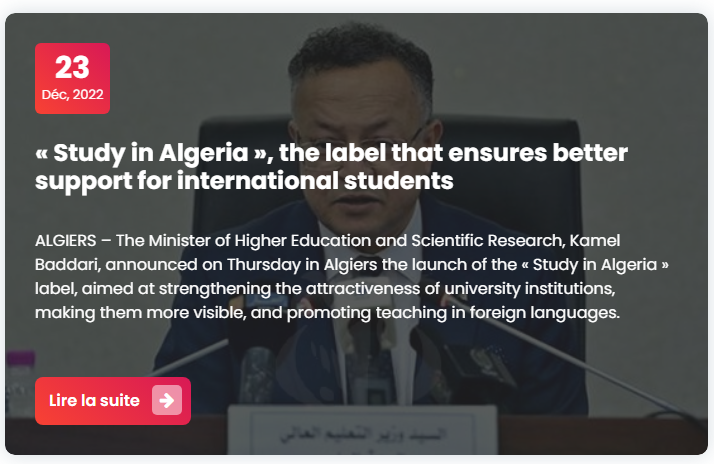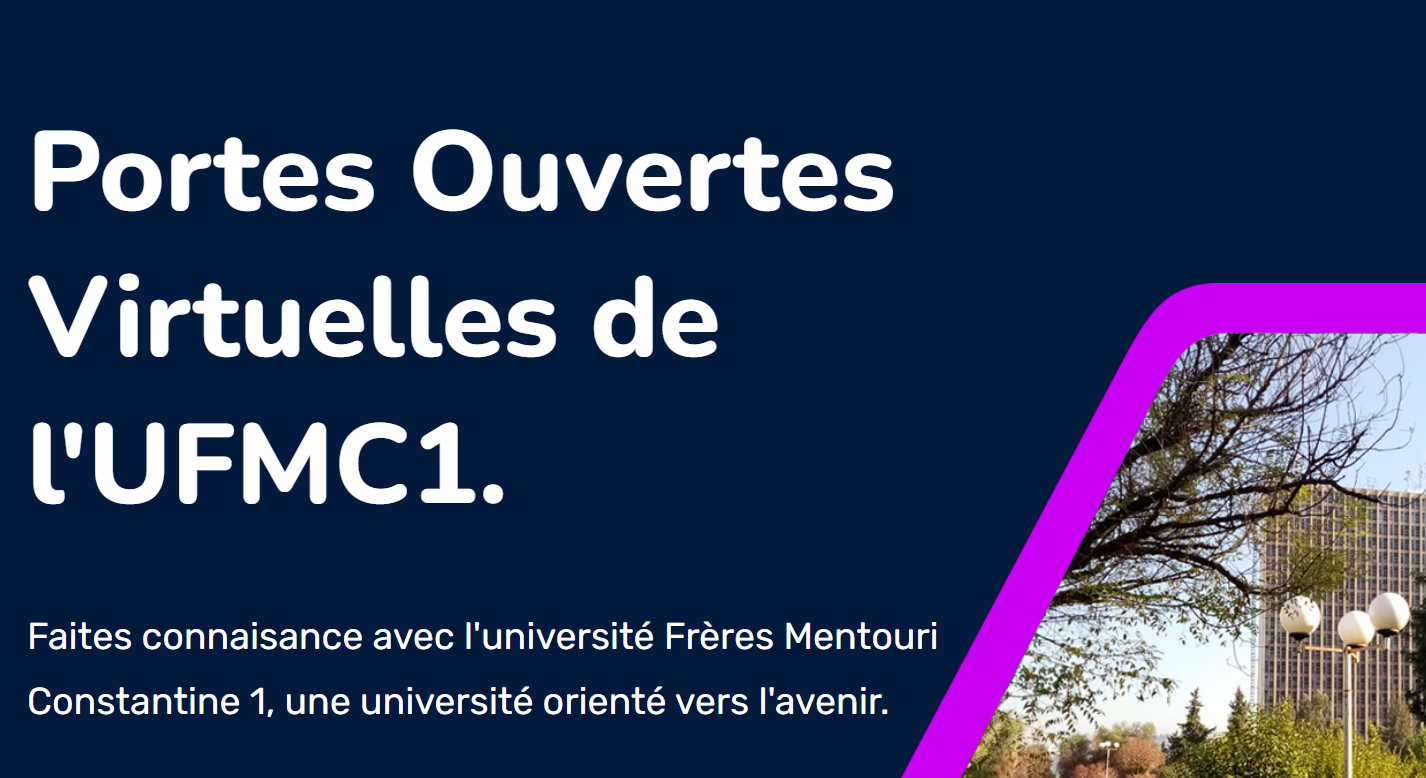Is science only for the rich?
Around the world, poverty and social background remain huge barriers in scientific careers.
Article tools
Last year, Christina Quasney was close to giving up. A biochemistry major at the University of Maryland, Baltimore County, Quasney's background was anything but privileged. Her father runs a small car-repair shop in the tiny community of Millersville, Maryland, and she was the first person in her immediate family to attend university. At the age of 25, she had already spent years struggling to make time both for her classes and the jobs she took to pay for them, yet was still far from finishing her degree. “I started to feel like it was time to stop fighting this losing battle and move on with my life,” she says.

Nature special:Inequality in science
Quasney's frustrations will sound familiar to millions of students around the world. Researchers like to think that nothing matters in science except the quality of people's work. But the reality is that wealth and background matter a lot. Too few students from disadvantaged backgrounds make it into science, and those who do often find that they are ill-prepared owing to low-quality early education.
Few countries collect detailed data on socioeconomic status, but the available numbers consistently show that nations are wasting the talents of underprivileged youth who might otherwise be tackling challenges in health, energy, pollution, climate change and a host of other societal issues. And it's clear that the universal issue of class is far from universal in the way it plays out. Here, Nature looks at eight countries around the world, and their efforts to battle the many problems of class in science.
United States: How the classroom reflects class divide
China: Low pay powers brain drain
United Kingdom: The paths not taken
Japan: Deepening divisions
Brazil: Progressive policy pays off
India: Barriers of language and caste
Kenya: Easy access but limited prospects
Russia: Positive policy, poor productivity
UNITED STATES: How the classroom reflects class divide
By Jane J. Lee
Quasney is lucky by global standards. She lives in an exceedingly rich country that is brimming with educational opportunities and jobs. Yet for students who share her struggles to make ends meet, the US higher-education system can pose one obstacle after another.
“It starts in high school,” says Andrew Campbell, dean of the graduate school at Brown University in Providence, Rhode Island. Government-supported early education is funded mainly at the state and local level, he notes, and because science courses are the most expensive per student, few schools in the relatively poor districts can afford to offer many of them. Students from these districts therefore end up being less prepared for university-level science than are their wealthier peers, many of whom attended well-appointed private schools.
That also puts the students at a disadvantage in the fiercely competitive applications process: only about 40% of high-school graduates in the lowest-income bracket enrolled in a university in 2013, versus about 68% of those born to families with the highest incomes.
The students who do get in then have to find a way to pay the increasingly steep cost of university. Between 2003 and 2013, undergraduate tuition, fees, room and board rose by an average of 34% at state-supported institutions, and by 25% at private institutions, after adjusting for inflation. The bill at a top university can easily surpass US$60,000 per year. Many students are at least partly supported by their parents, and can also take advantage of scholarships, grants and federal financial aid. Many, like Quasney, work part time.
Nonetheless, some 61% of US students earning bachelor's degrees graduate with some debt — US$26,900, on average. For those who go on to graduate programmes, tuition is usually paid for by a combination of grants and teaching positions. But if graduate students have to worry about repaying student loans, that can dissuade them from continuing with their scientific training.
Several initiatives are under way around the country to ease the way for science students from disadvantaged backgrounds, among them is the $14-million INCLUDES programme announced earlier this year by the US National Science Foundation. But for students such as Quasney, staying in science can still be a matter of luck.
One evening last year, she says, Michael Summers, a structural biologist at the university, happened to have dinner at the restaurant where she was hosting and waiting tables. That chance encounter led Quasney to join Summers' laboratory in January, and it was a revelation. Before, she had felt that some of her professors had forgotten what it was like to be a struggling student. Summers' lab is the exact opposite, she says. “There's no judgements and he doesn't discriminate.”
Her experiences have helped her to understand what she can expect when she applies to graduate school and pursues a career in research. “I'm gonna go for it,” she says. “Go big or go home.”
CHINA: Low pay powers brain drain
By David Cyranoski
It is no accident that China currently produces more science PhDs than any country in the world. To combat large-scale poverty, especially in the interior provinces, the communist government in Beijing is trying to make education equally available to everyone.
To help the poor, for example, Beijing sets tuition fees low and forbids raising them. Just 5,000 yuan (US$750) per year is enough for entry into premier institutions such as Tsinghua University in Beijing. And for those unable to come up with that sum, the country has national scholarship programmes, including tax-free loans and free admission.
Meanwhile, to help integrate China's 55 ethnic minorities, which are also often poor, most provinces give bonus points to minority students who take the Gaokao: a university entrance examination that is the most important threshold to pass on the way to an academic career. A quota system ensures that students from remote regions such as Xinjiang and Tibet are represented at elite schools. China even has 12 universities that are dedicated to minorities.
Beneath the surface, however, the reality of Chinese science often falls short of its egalitarian ideals. Children of senior government leaders and private business owners account for a disproportionate share of enrolment in the top universities. And students hesitate to take on the work-intensive career of a scientist when easier, and usually more lucrative, careers await them in business. According to Hepeng Jia, a journalist who writes about science-policy issues in China, this is especially true for good students from rich families.
“Chinese science often falls short of its egalitarian ideals.”
As a result, says Jia, scientists usually come from poorer families, get less support from home and work under a heavier financial burden. The situation is exacerbated by the low salaries, he says. The average across all scientific ranks is just 6,000 yuan per month, or about one-fifth of the salary of a newly hired US faculty member. Things are especially tough for postdoctoral researchers or junior-level researchers “who can hardly feed their families if working in bigger cities”, says Jia. This leads many scientists to use part of their grants for personal expenses. That forces them to make ends meet by applying for more grants, which requires them to get involved in many different projects and publish numerous papers, which in turn makes it hard to maintain the quality of their work.
Many Chinese researchers escape that trap by seeking positions overseas. Thousands of postdoctoral researchers will go abroad in 2016 with funding from the China Scholarship Council, and many more will find sponsors abroad to fund them. But China has also been able to lure some of the most prominent of these researchers back home. Cao Kai, a researcher at the Science and Technology Talent Center of the science ministry in Beijing, released a survey in April that found one such returning scientist was rewarded with a stunningly high annual salary of 800,000 yuan.
But that is not the norm, Kai says. It was just one extreme case he and his colleagues raised to convince “the government to raise the salary of professors at public universities”. That, he says, would go a long way to attracting and retaining talent in science, regardless of social background.
UNITED KINGDOM: The paths not taken
By Elizabeth Gibney
For the most part, science in the United Kingdom is egalitarian — for those who have already made it their career. A 2016 study found that, unlike in law or finance, researchers from lower-income backgrounds are paid no less than their more advantaged peers (D. Laurison and S. Friedman Am. Soc. Rev. 81, 668–695; 2016).
But getting into science is different. The same study found that only 15% of scientists come from working-class households, which comprise 35% of the general population (see 'Elite careers'). Another found that, over the past 25 years, 44% of UK-born Nobel-prizewinning scientists had gone to fee-paying schools, which educate 7% of the UK population (P. Kirby Leading People 2016 The Sutton Trust, 2016). “There's a class barrier to the professions,” says Katherine Mathieson, chief executive of the British Science Association, “but it's more extreme for science.”
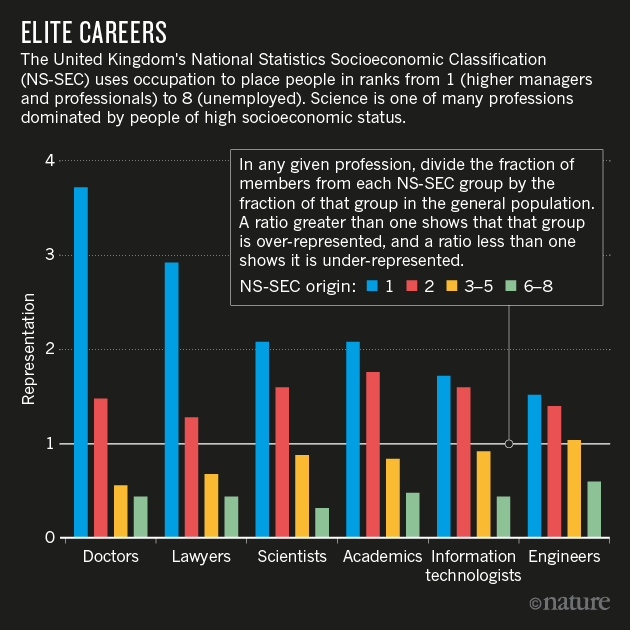
Source: Laurison, D. & Friedman, S. Am. Soc. Rev. 81, 668–695 (2016)
One hurdle is aspirational. In an ongoing, 10-year study, a group from King's College London found that most English 10–14 year olds find science interesting. But those from working-class backgrounds rarely saw it as a career — perhaps because they seldom encountered people in science-related jobs (ASPIRES: Young People's Science and Career Aspirations, Age 10–14 King's College London, 2013).
To tackle this, the King's team is working with London schools on a pilot programme to show children aged 11 to 15 how science fits into everyday life — by examining the chemicals in food, for example — and how science skills are relevant in a range of jobs. Early results are promising, and the team plans to expand the programme next year.
“There's a class barrier to the professions, but it's more extreme for science.”
Another barrier could be that UK students who are interested in a science career often need to abandon other subjects at the age of 16. “People from lower-income backgrounds who are unaware of the range of possible science careers might see it as a high-risk gamble,” says Mathieson.
A third issue is the effect of a sudden trebling of annual university fees to £9,000 (US$12,000) in 2012. “I suspect that fees could be a massive deterrent to those who grow up in families that have to worry about the basic level of income,” says Mathieson.
The danger, she adds, is that a failure to represent all backgrounds will not only squander talent, but increasingly isolate science from society. That disconnect was apparent in the Brexit referendum in June, when more than half of the public voted to leave the European Union, compared with around one in ten researchers. “That diverging world view is a real problem,” says Mathieson, “both for the quality of research and for scientists' place in society.”
JAPAN: Deepening divisions
By David Cyranoski
In Japan, inequalities in wealth and status do not reach the extremes found in China and India. Nonetheless, graduate education and academic research have become less attractive options over the past decade, especially for the underprivileged. Some warn that this could make research a preserve of the wealthy — with grave social costs.“It is an emerging issue in Japan,” says Yuko Ito, who researches science policy at the Japan Science and Technology Agency in Tokyo, a major science funder.
A big part of the problem is the rise in tuition fees: even at the relatively inexpensive national universities, the ¥86,000 (US$840) in entrance and first-year tuition fees students paid in 1975 would make little dent in the ¥817,800 they've been paying since 2005. In addition, thanks to Japan's long economic contraction, parents are chipping in 19% less for living costs on average than they did a decade ago.
This leaves students increasingly dependent on 'scholarships' — which in Japan are mainly loans that need to be paid back. Half of all graduate students have taken out loans, and one-quarter owe more than ¥5 million. “Many students just can't come up with the tuition and living costs to become researchers,” says Koichi Sumikura, a professor of science policy at the National Graduate Institute for Policy Studies in Tokyo.
Even for those who make it through university on loans, jobs that would make the debt worthwhile are far from guaranteed. In their prime years, between the ages of 30 and 60, one-third of university graduates earns less than ¥3 million per year. “In these conditions,” says Ito, “one would hesitate to follow an academic career.”
The social divide in higher education already shows. A crucial step to becoming a researcher is to enter a powerful institution such as the University of Tokyo, where the average income of a student's family is twice the national average. “If this situation continues,” Ito says, “science will become something that only the rich will hold an interest in, and research will grow distant from solving current social problems.”
The government has taken stock of the issue. A government plan for 'investment in the future', announced on 2 August, promises to increase funding for scholarships that need not be repaid as well as to boost the availability of tax-free student loans.
But the government has yet to take up a more specific examination of the relationship between success as a researcher and economic factors, says Sumikura. “That will be an important topic in the future,” he says.
BRAZIL: Progressive policy pays off
By Jeff Tollefson
In Brazil, inequalities in wealth are extreme by almost every measure — including education. The government-run schools are so bad that they are avoided by all but the poorest families. As recently as 2014, just 57% of the country's 19-year-olds had completed high school.
And yet there are signs of progress, especially in science, technology, engineering and medicine. In 2011, for example, Brazil created Science Without Borders, a programme to send tens of thousands of high-achieving university and graduate students to study abroad. Because students from wealthier families have by far the best primary and secondary education, they might have been expected to dominate the selection process. But by the end of the first phase this year, more than half of the 73,353 participants had come from low-income families.
“These statistics really caught us all by surprise,” says Carlos Nobre, a climate scientist who formerly headed of one of the public foundations that fund Science Without Borders.
In São Paulo, meanwhile, the medical school at the prestigious University of Campinas (UNICAMP) gives preference to admitting gifted students from government-run schools. The programme started in 2004 after research suggested that out of those with similar test scores prior to admittance, predominantly poor government-school students tended to perform better at UNICAMP than did their counterparts from private schools. The former comprised 68% of this year's entering class.
Carlos Henrique de Brito Cruz, who launched the UNICAMP initiative when he was the university rector, suspects that part of the answer is quite simple. “These students had more obstacles to overcome,” he says. “And when you put them in an environment where the obstacles are more or less the same, they tend to realize more of their potential.”
Brazil may also be seeing the fruits of the government's effort to improve scientific literacy and push more students into science careers, which gained momentum after the inauguration of Luiz Inácio Lula da Silva as president in 2003. A division at the federal Ministry of Science, Technology and Innovation focuses entirely on 'social inclusion', with programmes to improve public schools and promote research in fields that affect local communities, such as nutrition and sustainability.
The poor quality of secondary education remains a substantial problem that could take a generation or more to address, experts say. Nonetheless, existing initiatives could be boosting the quality of government schools enough for ambitious students to excel, says Nobre. The next question, he says, is whether these students will be able to bolster innovation in Brazilian science. “Now that they are coming into the market, we will have to start evaluating very quickly what happened to these students.”
INDIA: Barriers of language and caste
By T. V. Padma
Despite the renown of technology hubs such as Bangalore and universities such as the multicampus Indian Institute of Technology, vast numbers of talented students in India never get to realize their full potential owing to poor rural schools, language barriers and the caste system. Especially outside the cities, higher education — including science — largely remains a privilege of the rich, the politically powerful and the upper castes.
India's national census does not collect data on caste, rural or gender representation in science, nor do the country's science departments. Nonetheless, says Gautam Desiraju, a chemist at the Indian Institute of Science in Bangalore, it is clear that rural Indian students are hampered by a lack of good science teachers and lab facilities, and are unaware of opportunities to enter mainstream science (see www.nature.com/indiascience). The barriers are even higher for rural girls, who are discouraged from pursuing higher studies or jobs, and for girls from poor urban families, who are expected to take jobs to contribute to their dowries.
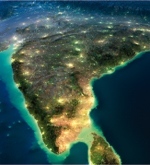
Nature special:Science in India
Many rural students are also hampered by their poor English, the language that schools often use to explain science. “Teachers from elite colleges and interview and selection committees are often biased against such students,” says immunologist Indira Nath, at the Indian National Science Academy in New Delhi.
Caste — the hereditary class system of Hindu society — is officially not an issue. India's constitution and courts have mandated that up to half of the places in education and employment must be reserved for people from historically discriminated-against classes. However, a clause excludes several of India's top science centres from this requirement. And in reality there is an “unintentional, subtle or hidden discrimination against students from reserved categories, right from high school to college levels”, says Shri Krishna Joshi, a scientist emeritus at the National Physical Laboratory in New Delhi. Teachers do not encourage them as much as they do students from upper castes. As a result, he says, “poor students from reserved categories in turn often have psychological barriers and believe they cannot compete with the others”.
Still, says Desiraju, there are signs of progress. For a long time, Indian officials assumed that all they had to do was set up centres of scientific excellence and the effects on education would simply trickle down to the masses. “But now,” he says, “agencies are beginning to adopt a more bottom-up approach” that seeks to find talented people at the lowest economic levels.
At the University of Delhi South Campus, geneticist Tapasya Srivastava sees the effects of that shift. “Competitiveness for higher science education is increasing across all caste-based categories and gaps are dissolving,” she says.
“Talented young researchers are getting admissions based on their merit alone and not because of the constitutional provision,” agrees Desiraju. But there is much still to be done, he says. “Finding the right talented girl or boy in a small town or village in India is often like finding a needle in a haystack.”
KENYA: Easy access but poor prospects
By Linda Nordling
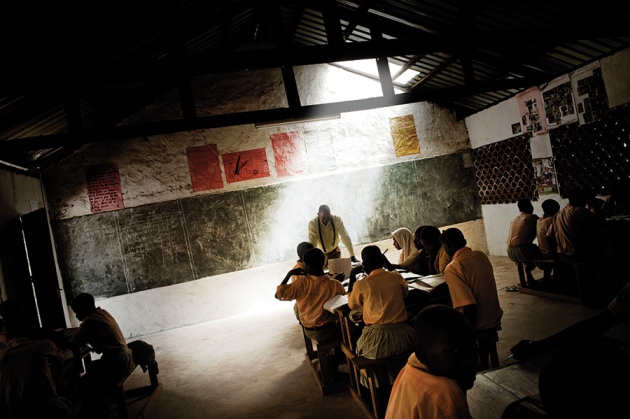
Francesco Cocco/Contrasto/eyevine
Poor students from Kenya are often interested in science, but struggle to make it a career.
In Kenya, where around 40% of the population lives on less than US$1.25 a day, class matters surprisingly little for who makes it into science. As one of Africa's fast-growing 'lion' economies, the country has seen university enrolment more than double since 2011, reaching more than 500,000 last year. The government subsidizes tuition fees for poor secondary-school students who get good grades in science, and there are loans available to help them with living expenses.
At the postgraduate level, however, the lack of opportunities in Kenya means that many science hopefuls have to do part of their training abroad. “The problem for me wasn't getting into science, it was staying in,” says Anne Makena, a Kenyan from a lower-class background with an undergraduate degree in biochemistry from Moi University in Eldoret. She now has a Rhodes scholarship to finish her PhD in chemical biology at the University of Oxford, UK.
“Class matters surprisingly little for who makes it into science.”
For those staying at home, the surest path to a research career is to get a job with foreign-funded organizations such as the International Centre of Insect Physiology and Ecology (ICIPE) in Nairobi, or the partnership between the Kenya Medical Research Institute (KEMRI) and the UK Wellcome Trust. But competition is fierce, and it can take years to get accepted. This is when graduates from a poorer background are more likely to give up, says Makena. They are drawn by lucrative private-sector salaries and mindful of the need to contribute financially to their families, whereas wealthier students can afford to wait.
Another source of uncertainty is Kenyan universities' struggle to secure enough operating funds from the government. The shortfall has led vice-chancellors in the country's public universities to propose up to a five-fold rise in tuition fees for resource-intensive courses, including science. If this happens and government subsidies do not keep pace, poorer students might forego science courses for cheaper degrees.
That would be a pity, says Baldwyn Torto, head of behavioural and chemical ecology at ICIPE, because Kenyan students from modest backgrounds make excellent scientists in his experience. “You find kids from poorer families performing equally well, if not better, than kids from wealthier families,” he says.
RUSSIA: Positive policy, poor productivity
By Quirin Schiermeier
Following the Soviet Union's collapse in 1991, Russia was quickly given over to untamed capitalism and increasing inequity. Yet the country retained its socialist ideals in education: even now, Russia produces a large share of its science students and researchers from low- and middle-income backgrounds.
“There is a national consensus in Russia regarding the value of equal opportunities in education for the modernization of our country,” says Dmitry Peskov, who directs the young professionals division of the Moscow-based Agency for Strategic Initiatives, which promotes economic innovation in Russia. The country hosts some 3,000 universities and higher learning institutes, and about half of its secondary-school graduates go on to attend them. The average among all Organisation for Economic Co-operation and Development countries is about 35%.
In peripheral regions such as the Urals or Siberia, where local governments are keen to develop scientific and engineering capacity, teachers identify talented students as early as ages 4 to 6. If they continue to show promise, they are encouraged to enrol at local universities, whose tuition-free programmes may focus on local needs such as agricultural technology.
Children who demonstrate exceptional skills in science, art, sports or even chess may earn admission to the Sirius educational centre in Sochi on the Black Sea. This centre, backed by Russian president Vladimir Putin, was set up after the 2014 Winter Olympics to help Russia's most gifted youths develop their talent with support from leading scientists and professionals.
Since December 2015, prospective students who succeed in local or national science competitions and maths Olympiads can also hope to secure a presidential grant worth 20,000 roubles (US$307) per month. These grants allow hundreds of students from lower social backgrounds to study at the nation's top universities on the sole condition that they will stay in Russia for at least five years after graduation.
But despite such efforts, Russia's science output remains relatively low. One reason, Peskov says, is the Russian science community's isolation. For all their skills and social diversity, Russian researchers tend to speak poor English and are underrepresented in international meetings and collaborations. Uncertainty over the Russian government's future support of science adds to the problem. “Lucrative jobs in finance, business administration or industry are much more popular among well-trained young Russians than is a risky academic career,” he notes.
Latest from Redaction web 2
- Lien du ministère de la santé
- Annonce du dépôt des dossiers des participants au Salon Du Livre Universitaire Scientifique et Technique pour L’année Universitaire 2019/2020 de l'Université des Frères Mentouri Constantine 1
- Programmes des bourses BID
- Initiative Prima lancement d'un programme de stages aux jeune chercheurs pour l'année 2020/2021
- Troisième appel à projets Algéro-Espagnol sera lancé à partir du 01 /04 /2020 au 01/06/2020


